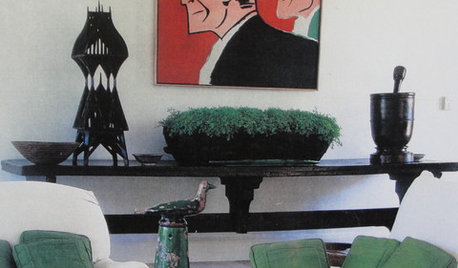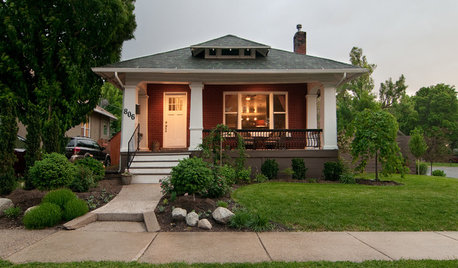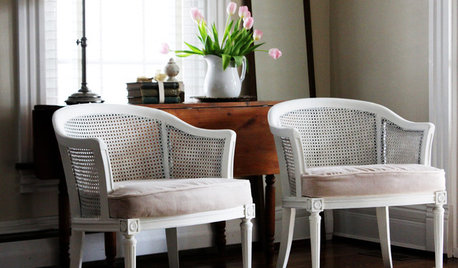Stripping
CEFreeman
12 years ago
Related Stories

CURB APPEALTake Your Hell Strip to Heavenly Heights: 8 Design Ideas
Trade weedy dirt and trash for a parking strip filled with wispy grasses, low-growing flowers and textural trees
Full Story
FARM YOUR YARDHow to Farm Your Parking Strip
Get an up-close look at a thriving street-side edible garden, one of many sprouting up in Seattle
Full Story
HOUSEKEEPINGLower Your Heating Bills With Some Simple Weather Stripping
Plug the holes in your house this winter to make sure cold air stays where it belongs: outside
Full Story
LANDSCAPE DESIGN4 Gorgeous Garden Looks for a Narrow Planting Strip
Make a strong design statement in an unexpected place with these ideas for perimeter plantings, pocket gardens and more
Full Story
DECORATING GUIDESHoly Creativity, Batman!: Comic Strip Decor for Real Life
The evil villains of uninspired design don't stand a chance against these doldrum-fighting superheroes
Full Story
HOUZZ TOURSMy Houzz: Stripping Down Uncovers a 1910 Bungalow's Beauty
A first-time homeowner brings out the charm and coziness in her Utah home through determination and patience
Full Story
BUDGET DECORATINGBudget Decorator: 8 Ways to Make Old Furniture Look Brand New
Learn stripping, staining, painting and reupholstering basics to make bargain-basement furniture worthy of center stage at home
Full Story
FARM YOUR YARDHow to Build a Raised Bed for Your Veggies and Plants
Whether you’re farming your parking strip or beautifying your backyard, a planting box you make yourself can come in mighty handy
Full Story
LANDSCAPE DESIGNGeometric Designs Keep Plants in Line
Structure your landscape with strips and blocks for simplicity and a crisp, contemporary look
Full Story
EXTERIORSHistory Gets a New Spin on a Victorian Facade
Modernization had stripped this home’s exterior of its charm. Now the owners have put it back — in their own personal take
Full Story








bobismyuncle
sombreuil_mongrel
Related Professionals
East Moline Cabinets & Cabinetry · Oakland Park Cabinets & Cabinetry · Birmingham Carpenters · Snoqualmie Carpenters · Burr Ridge Flooring Contractors · Cartersville Flooring Contractors · Easton Flooring Contractors · Edmonds Flooring Contractors · Leland Flooring Contractors · Louisville Flooring Contractors · Monroe Flooring Contractors · Roseville Flooring Contractors · Wausau Flooring Contractors · Surprise Furniture & Accessories · Fountain Furniture & AccessoriesCEFreemanOriginal Author
karinl
CEFreemanOriginal Author
bobismyuncle
karinl